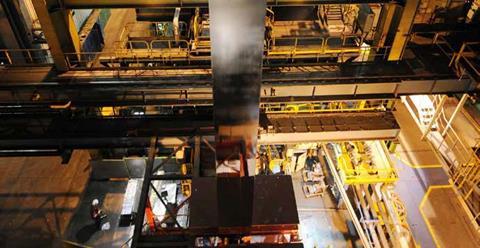- Plant Functions
- Smart Factory
- Register now: Automotive Gateway Mobilizer - Mastering Communication Challenges in Battery and EV Components End-of-Line Tests
- New whitepaper: BASF and Catena-X: Creating a more connected and efficient automotive industry
- Watch now: Digital Transformation at Inflection Point within Automotive Manufacturing
 AMS/ABB Automotive Manufacturing Outlook Survey 2024 results
AMS/ABB Automotive Manufacturing Outlook Survey 2024 results
- Electrification
- Automation
- Sustainability
- Events
- Companies
- Materials
- Regions
- Kaizen
- Video and Audio
- Magazine
- Surveys & Reports
- Newsletters
- Partner Content
- Register now: Automotive Gateway Mobilizer - Mastering Communication Challenges in Battery and EV Components End-of-Line Tests
- Watch now: Digital Transformation at Inflection Point within Automotive Manufacturing
 Henkel’s advanced thermal management for ADAS reliability
Henkel’s advanced thermal management for ADAS reliability How Henkel is co-developing the EV batteries of the future
How Henkel is co-developing the EV batteries of the future
- Whitepapers
- Media Pack
- Register
- Sign In
- Home
- Plant Functions
- Smart Factory
- Electrification
- Automation
- Sustainability
- Events
- Companies
- Materials
- Regions
- Kaizen
- Video and Audio
- Magazine
- Surveys & Reports
- Newsletters
- Partner Content
- Whitepapers
- Media Pack
- Register
- Sign In
ArcelorMittal
The right steel in the right place

Jet set

THIS ARTICLE IS AVAILABLE TO REGISTERED USERS ONLY.
To continue reading this article and others like it, please SIGN-IN or REGISTER FREE today
Join us today for free

Register free now to stay up-to-date with the latest industry developments, trends, and analysis, to find in-depth reports and intelligence and to connect with your peers.
Your free registration includes:
- Access to our exclusive content
- Bi-Weekly enewsletter
- Option to save articles to a personal library
- Ability to comment on articles
- Full access to the digital news archives
- Ability to manage your profile and communication preferences
Gain access to our exclusive content and features register free today
Non-registered users are able to access two AMS exclusive articles per week. You have now used your allocation.
To continue reading this article and others like it, please SIGN-IN or REGISTER FREE today.

ArcelorMittal
The right steel in the right place

Related categories
Automotive Manufacturing Solutions (AMS) is the essential resource for automotive manufacturing professionals and suppliers globally.
Join us today and access AMS’s wealth of global news, insights, intelligence and content, and to make valuable connections with your peers from across the automotive industry.
Register FREE today
Automotive Manufacturing SolutionsYour free registration includes:
- Weekly AMS News and twice quarterly AMS In Focus newsletters
- Regular podcast series
- Twice yearly magazine (digital)
- Special offers
- Reports from key manufacturing shows
- Access to the digital news archives
Site powered by Webvision Cloud

























